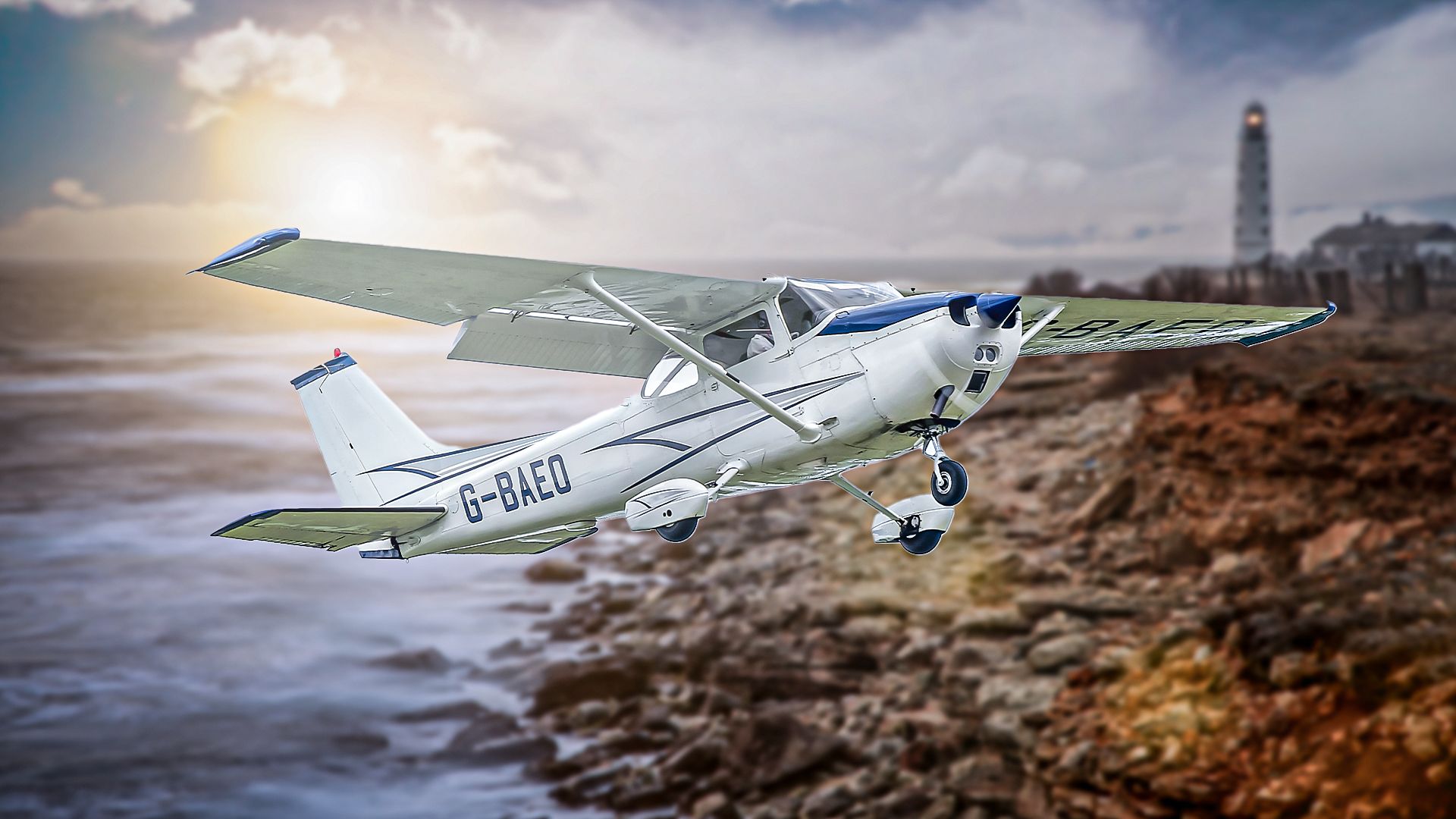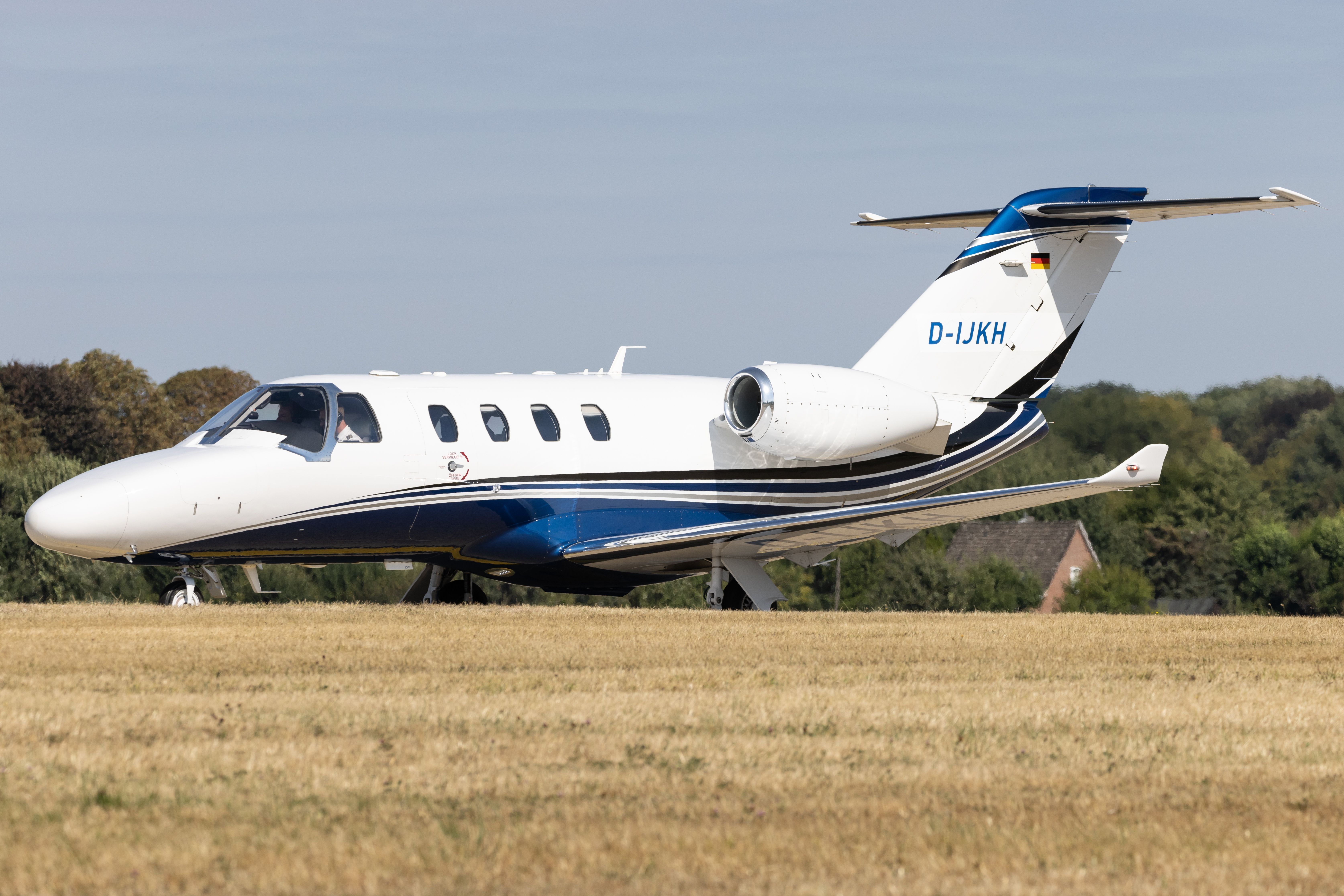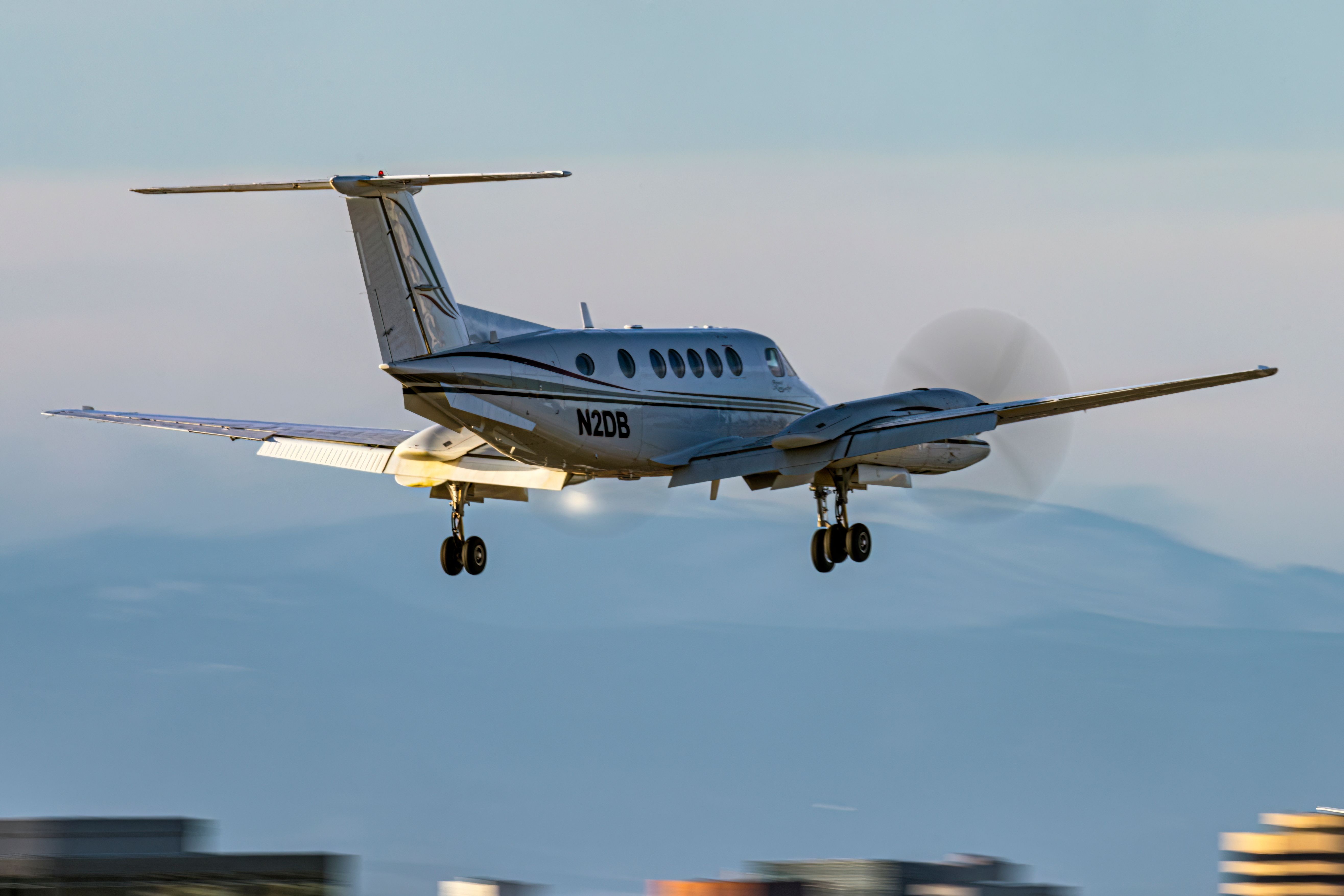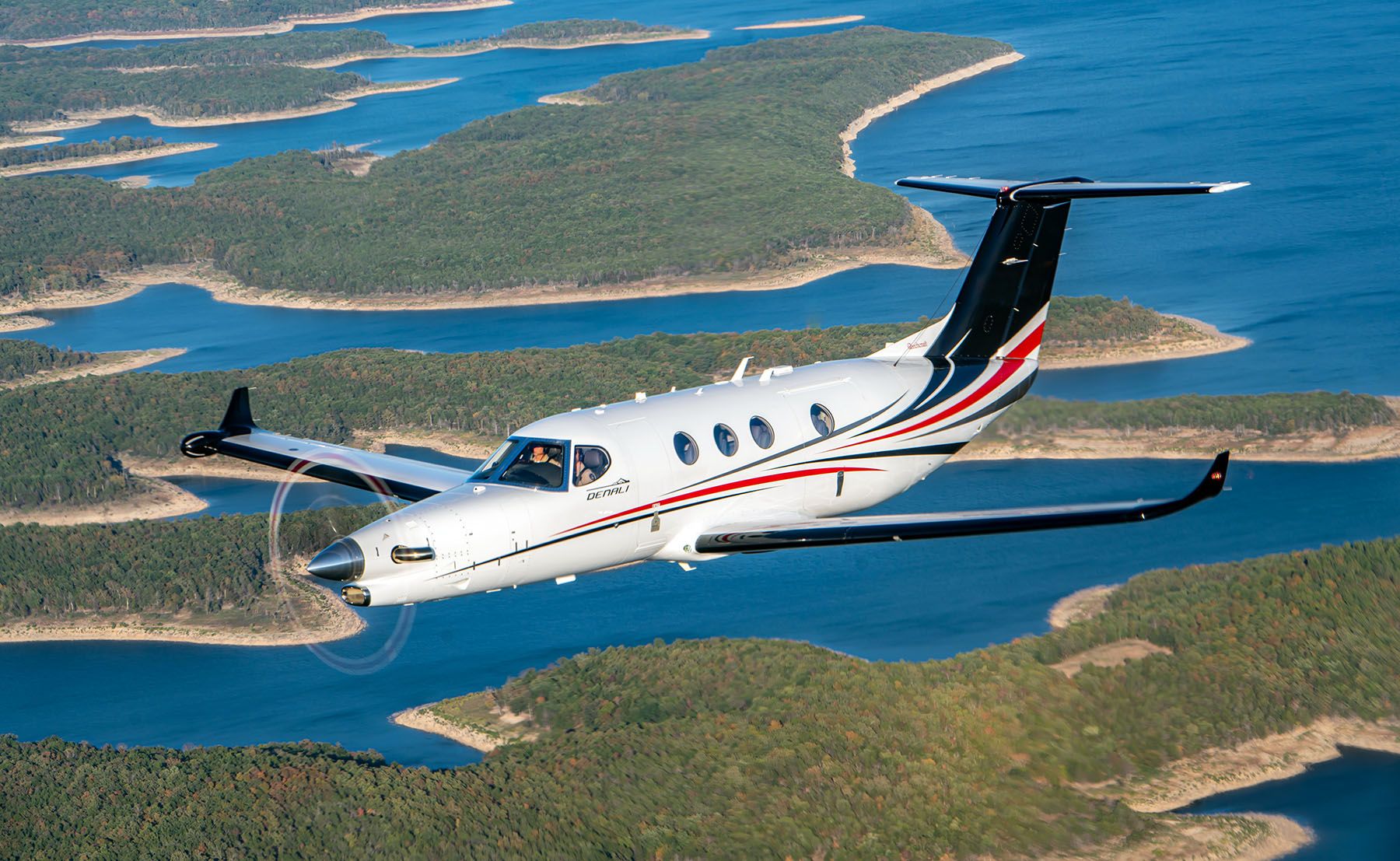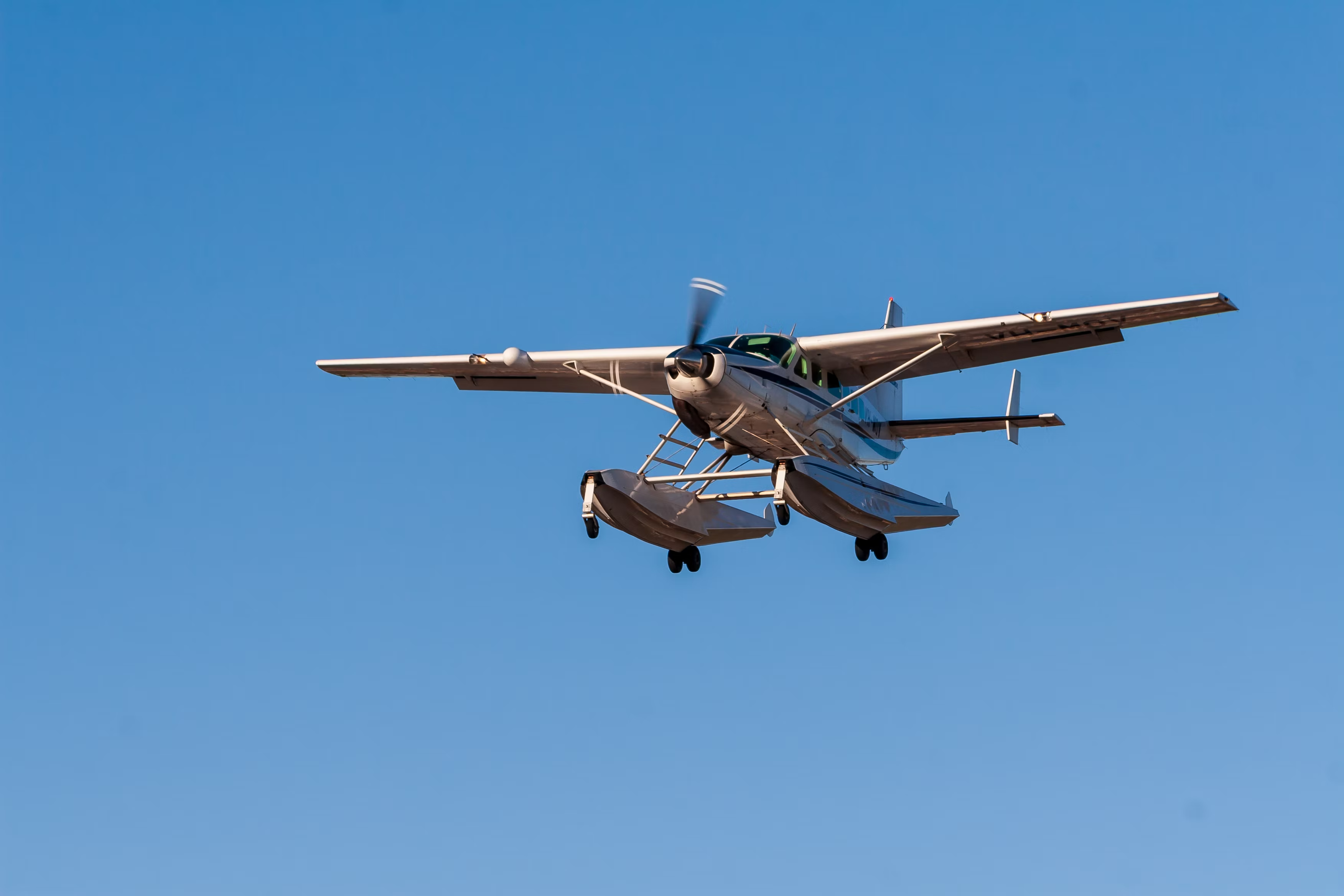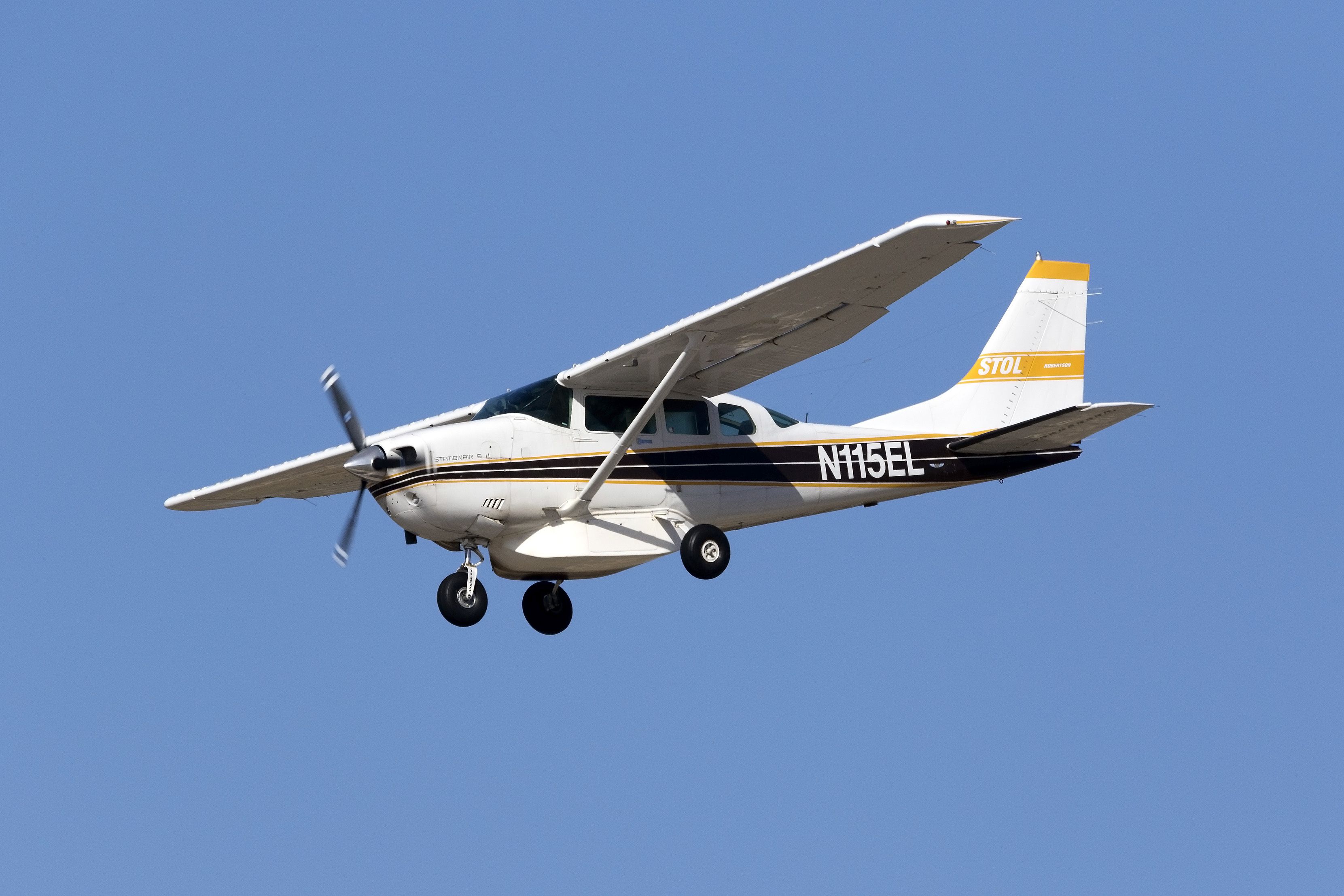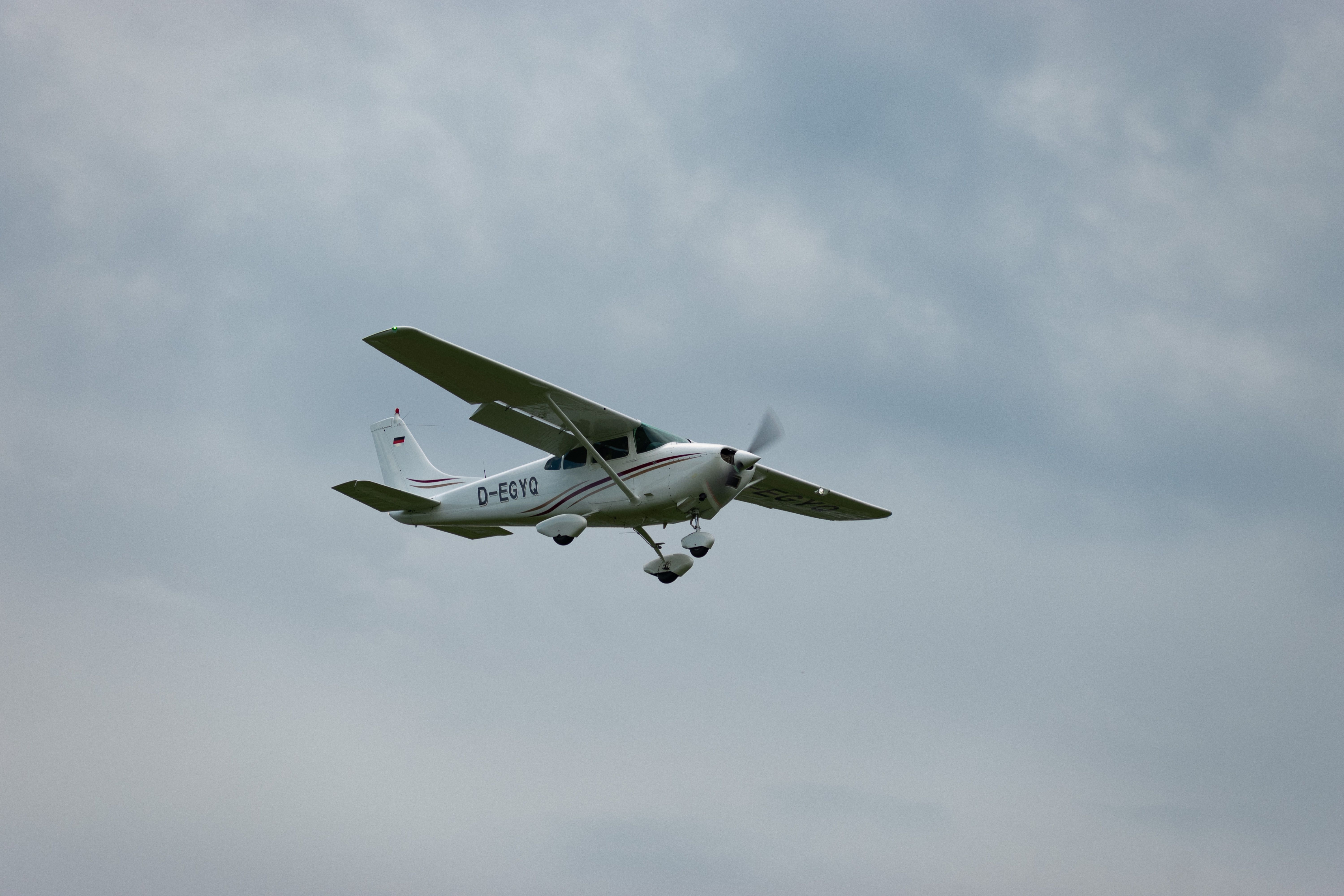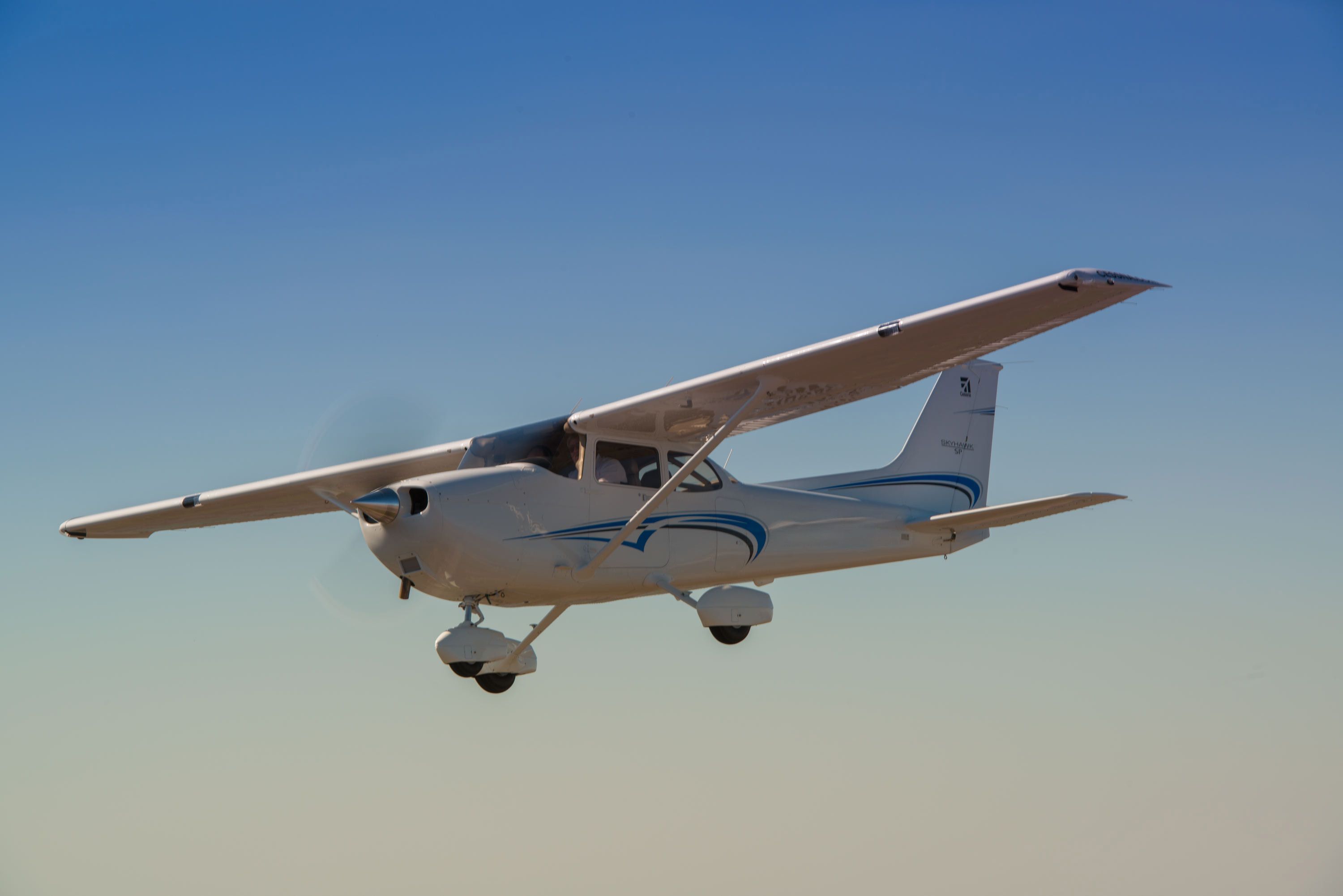Summary
- EAA AirVenture Oshkosh, which is held at Wittman Regional Airport, is the busiest airport in the world during the week of the exhibition.
- The event showcases a wide variety of airshows, flying displays, and exhibits for aviation enthusiasts across the world.
- Textron Aviation is set to bring seven unique aircraft to the exhibition, including the Cessna Citation M2, the Cessna Caravan, the Beechcraft King Air, and several Cessna single-engine aircraft.
EAA AirVenture Oshkosh is an annual exhibition and airshow that is held at Wittman Regional Airport (OSH) in Oshkosh, Wisconsin. Aviation enthusiasts and plane owners from across the world make an effort to visit this week-long event.
The exhibition brings in so many attendees, that those that fly into the airport make the Wittman Regional Airport the busiest airport in the world during the week. Typically, this exhibition is held during the last week of July, as this year the event is held from July 22 through July 28.
The event is extremely popular for a number of reasons. Many aviation enthusiasts attend to see the wide range of airshows throughout the week. This year, the Snowbirds, Red Bull Airforce, the Titan Aerobatics Team, and several military aircraft displays, among many others, during the week-long event.
Other attendees will stop by in an attempt to catch a ride on one of the many flying displays at EAA AirVenture Oshkosh. This year, a Ford Tri-Motor 5-AT-B, a B-25 Berlin Express, and a Bell 47 helicopter are scheduled to provide flights for those that attend.

Related
A Look At The EAA AirVenture Oshkosh 2024 Flight Show Schedule
EAA AirVenture will be held from July 22 through July 28.
However, attendees also have the ability to roam around the huge convention grounds. Aircraft of all kinds are spread out throughout the event, giving each attendee a unique perspective on aviation as a whole. This includes Boeing Plaza that will display classic warbirds and modern Boeing aircraft. This also includes a wide variety of vintage warbirds, homebuilt aircraft, aerobatic planes, and there is even a seaplane base nearby.
The grounds will also display currently produced aircraft from many of the most popular original equipment manufacturers (OEMs). This includes Cirrus, Piper, and other general aviation manufacturers. However, one of these manufacturers is set to bring a whole fleet of aircraft.
Let’s take a closer look at the seven unique aircraft that Textron Aviation, which is the parent company of both Cessna and Beechcraft, is scheduled to bring to this year’s EAA AirVenture Oshkosh. These aircraft can be found at both booth 78 and booth 393.
7
Cessna Citation M2
Year introduced: 2011
|
Capacity |
Seven passengers |
|---|---|
|
Length |
42 feet seven inches |
|
Height |
13 feet eleven inches |
|
Wingspan |
47 feet three inches |
|
Maximum takeoff weight (MTOW) |
10,700 pounds |
|
Maximum cruise speed |
404 knots (465 miles per hour) |
|
Range |
1,550 nautical miles (1,784 miles) |
|
Service ceiling |
41,000 feet |
The Citation M2 is part of the Cessna CitationJet (CJ) series of aircraft. Cessna originally developed this family of light business jets in the late 1980s. Since then, the CJ series has grown to several different variants. The original CitationJet was eventually upgraded to the CJ1, CJ1+, and, eventually, the Citation M2. The CJ family also includes the CJ2, and the currently produced CJ3 and CJ4.
Photo: Kevin Hackert | Shutterstock
Cessna released the Cessna M2, the lightest of the CJ series, in 2013. This light business jet eventually replaced the Citation Mustang as Cessna’s entry-level jet. The Citation M2 is powered by two Williams FJ44 turbofan engines, which provide nearly 2,000 pounds of thrust each.
The upgrade from the CJ1+ to the M2 also included a newly furnished interior and the Garmin G3000 avionics suite. It also added winglets to improve the aircraft’s efficiency. Overall, it has a higher top speed, faster climb rate, and further range than previous variants, which makes it an enticing light business jet to operate.
6
Beechcraft King Air 360
Year introduced: 2020
|
Capacity |
Eleven passengers |
|---|---|
|
Length |
46 feet eight inches |
|
Height |
14 feet four inches |
|
Wingspan |
57 feet eleven inches |
|
Maximum takeoff weight (MTOW) |
15,000 pounds |
|
Cruise speed |
312 knots (360 miles per hour) |
|
Range |
1,806 nautical miles (2,078 miles) |
|
Service ceiling |
35,000 feet |
The King Air 360 is the latest variant of the Beechcraft King Air family. Originally, the larger series of King Airs were developed in the late 1960s and were designated as the Super King Air. Since 1974, this aircraft has been in constant production, with nearly 4,000 total aircraft produced by Beechcraft. Since then, several variants have been introduced, which include a wide array of upgrades.
Photo: BlueBarronPhoto | Shutterstock
The King Air 360 is Beechcraft’s latest upgrade to this significant series of aircraft. Both the King Air 360 and the King Air 360ER were certified by the Federal Aviation Administration (FAA) in October 2022, with deliveries beginning shortly after.
This aircraft is powered by two Pratt & Whitney Canada PT6A-60A turboprop engines. The newest variants include an avionics upgrade, autothrottle, and digital pressurization. Interior upgrades were also implemented which lowered the cabin altitude by over 10%.
5
Beechcraft Denali
Year introduced: Scheduled 2025
|
Capacity |
Nine passengers |
|---|---|
|
Length |
48 feet nine inches |
|
Height |
15 feet two inches |
|
Wingspan |
54 feet three inches |
|
Maximum takeoff weight (MTOW) |
TBD |
|
Cruise speed |
285 knots (328 miles per hour) |
|
Range |
1,600 nautical miles (1,800 miles) |
|
Service ceiling |
31,000 feet |
The Denali is Beechcraft’s latest aircraft project. This aircraft has yet to be certified and is currently undergoing the certification process. Earlier this year, Textron Aviation announced that the Denali was undergoing the flight test phase of this certification process, which shows the aircraft has achieved a significant milestone in the lengthy certification process.
Photo: Beechcraft
The Beechcraft Denali was first announced at EAA AirVenture Oshkosh 2015. The single-engine turboprop aircraft will most likely compete with both the Pilatus PC-12 and the Daher-Socata TBM, which look similar to the Denali.
The Beechcraft Denali is powered by a Praatt & Whitney PT6-67A turboprop engine. It also features a large pressurized cabin, retractable tricycle landing gear, winglets, and a mostly carbon fiber airframe.
4
Cessna Caravan
Year introduced: 1984
|
Capacity |
13 passengers |
|---|---|
|
Length |
37 feet seven inches |
|
Height |
14 feet eleven inches |
|
Wingspan |
52 feet one inch |
|
Maximum takeoff weight (MTOW) |
8,000 pounds |
|
Cruise speed |
186 knots (214 miles per hour) |
|
Range |
1,070 nautical miles (1,230 miles) |
|
Service ceiling |
25,000 feet |
The 208 Caravan is Cessna’s most popular utility aircraft. Cessna first developed this aircraft with FedEx to be used as a cargo feeder. The aircraft first flew in 1982, and it was first introduced to FedEx Feeder, the aircraft’s launch customer, in 1984.
Since then, over 3,000 aircraft in several different variants have been delivered. The variant that FedEx utilizes, which is designated as the Cargomaster, is almost completely empty, allowing the entire cargo bay to be used for packages and mail. Other variants include a passenger configuration, a seaplane, medical evacuation, air mobility, aerial surveillance, and precision strike.
Photo: Philip Schubert | Shutterstock
The Caravan is a high-wing aircraft that does not use a pressurized cabin. It has tricycle landing gear that can be fitted with floats or skis, depending on the use of the aircraft. It is powered by a Pratt & Whitney Canada PT6A turboprop engine.
3
Cessna Turbo Stationair HD
Year introduced: 1962
|
Capacity |
Five passengers |
|---|---|
|
Length |
28 feet three inches |
|
Height |
Nine feet four inches |
|
Wingspan |
36 feet |
|
Maximum takeoff weight (MTOW) |
3,600 pounds |
|
Cruise speed |
142 knots (163 miles per hour) |
|
Range |
730 nautical miles (840 miles) |
|
Service ceiling |
15,700 feet |
The Cessna 206 Turbo Stationair is the largest single-engine piston aircraft that is currently in production by Cessna. The Wichita, Kansas-based company initially developed the aircraft series from the Cessna 210, which had previous success. However, Cessna added fixed landing gear while still maintaining a similar frame compared to the Cessna 210.
The Cessna Stationair has been produced in some variant for nearly 60 years, although the company halted single-engine production from 1986 to 1998. Overall, over 10,000 Stationairs have been produced in some variant, which includes the Cessna 205, Cessna 206, and Cessna 207.
Photo: InsectWorld | Shutterstock
The Cessna 206 Turbo Stationair provided a more powerful engine, double cargo doors, and a turbocharged engine. It also uses a reinforced airframe and heavy-duty brakes.
These aircraft are typically used for air ambulances, agricultural uses, aerial photography, or utility jobs, as they can utilize skis or floats. Some operators utilize a belly pod for additional storage on this unique aircraft.
2
Cessna 182 Skylane
Year introduced: 1956
|
Specification |
Cessna 182 Skylane |
Cessna 182 Turbo Skylane |
|---|---|---|
|
Capacity |
Three passengers |
Three passengers |
|
Length |
29 feet |
29 feet |
|
Height |
Nine feet four inches |
Nine feet four inches |
|
Wingspan |
36 feet |
36 feet |
|
Maximum takeoff weight (MTOW) |
3,100 pounds |
3,100 pounds |
|
Cruise speed |
145 knots (167 miles per hour) |
165 knots (190 miles per hour) |
|
Range |
915 nautical miles (1,053 miles) |
971 nautical miles (1,117 miles) |
|
Service ceiling |
18,000 feet |
18,000 feet |
The Cessna 182 Skylane is another popular single-engine high-wing aircraft produced by Cessna. The aircraft was first introduced in 1956 as a light utility aircraft. Since then, nearly 25,000 aircraft have been produced through several different variants.
Photo: Robert Buchel | Shutterstock
Cessna will bring two of these variants to EAA AirVenture Oshkosh this year. The 182 Skylane is one of the most modern variants of the family of aircraft that was first introduced in 2001.
This aircraft features upgraded cowling and wheel fairings to reduce drag. It also utilizes a newly upgraded engine and a Garmin G1000 avionics package that was introduced in the 2010s.
The other Skylane variant is the turbo 182. This aircraft ran for several years in the early 2000s, although it was discontinued in 2013. However, Cessna brought this upgraded aircraft back into production in late 2023.
This variant includes the powerful Lycoming IO air-cooled engine, which provides 230 horsepower for the light utility aircraft.
1
Cessna 172 Skyhawk
Year introduced: 1956
|
Capacity |
Three passengers |
|---|---|
|
Length |
27 feet two inches |
|
Height |
Eight feet eleven inches |
|
Wingspan |
36 feet one inch |
|
Maximum takeoff weight (MTOW) |
2,450 pounds |
|
Cruise speed |
122 knots (140 miles per hour) |
|
Range |
696 nautical miles (801 miles) |
|
Service ceiling |
13,500 feet |
The most successful single-engine general aviation aircraft that Cessna produces is the Cessna 172 Skyhawk. This aircraft is also the most produced aircraft of all time, with over 45,000 total aircraft manufactured. It was produced from 1956 through 1986, before Cessna restarted the production line in 1996.
The 172 was developed from the 170, although it utilized tricycle landing gear instead of a tailwheel configuration like the Cessna 170.
Photo: Textron Aviation
Currently, the only Skyhawk variant in production is the Cessna 172S. It utilizes an upgraded Lycoming engine to provide the aircraft with about 180 horsepower.
The more powerful engine allowed for a higher maximum takeoff weight. Newer variants also utilize the Garmin G1000 avionics system and an upgraded interior with leather seats, cupholders, and USB outlets.

